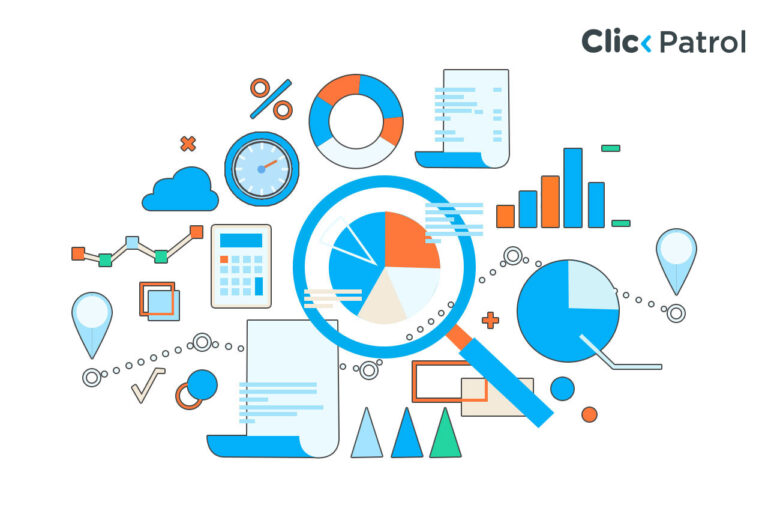
Marketing campaign tracking template: Boost your Ad performance & ROI
Abisola Tanzako | Apr 25, 2025

Table of Contents
- Marketing campaign tracking templates: Definition, benefits, and best practices
- Benefits of using a marketing campaign tracking template
- Best practices for using a marketing campaign tracking template
- Formats of a marketing campaign tracking template
- Why use a marketing campaign tracking template?
- Key components of a marketing campaign tracking template
- How to customize campaign tracking templates for different marketing goals
- Step 1: Choose a tracking tool:
- Step 2: Define your campaign goals:
- Step 3: Organize your metrics and data:
- Step 4: Automate data collection (If possible):
- Step 5: Analyze and adjust:
- The power of effective campaign tracking
- FAQs
Businesses that use structured tracking templates experience up to 40% better performance in campaign monitoring.
A marketing campaign tracking template is a crucial tool that enables businesses to monitor campaign performance, measure results, and refine future efforts.
Without proper tracking, marketers risk wasting budgets, missing opportunities, and failing to understand their audience’s behavior.
This guide explains how to create and use marketing campaign tracking templates to improve performance and streamline reporting.
Marketing campaign tracking templates: Definition, benefits, and best practices
A marketing campaign tracking template is a structured document or digital tool used to track, analyze, and measure the effectiveness of marketing campaigns across different channels.
It is a centralized system that helps marketers organize data, monitor key performance indicators (KPIs), and optimize future campaigns based on real-time insights. Marketing campaigns often span multiple platforms, including social media, paid advertising, email marketing, search engine optimization (SEO), and offline channels.
Without a proper tracking system, it becomes challenging to determine which strategies are effective, where the budget is best allocated, and how to optimize results.
A well-designed template enables businesses to identify trends, pinpoint successful tactics, and eliminate wasteful spending.
Key functions of a marketing campaign tracking template
They include:
- Campaign organization involves centralized management of all campaign details, such as objectives, channels, and budgets.
- Performance monitoring helps track key engagement metrics, including click-through rate (CTR), conversion rate, and return on ad spend (ROAS).
- Data-driven decision-making: Enables marketers to adjust real-time strategies based on performance insights.
- Budget management: Tracks spending and helps allocate resources efficiently to maximize ROI.
- Multi-channel analysis: Compares campaign effectiveness across various marketing platforms (Google Ads, Facebook, Instagram, LinkedIn, email, etc.).
Benefits of using a marketing campaign tracking template
Below are some of the benefits of marketing campaign tracking templates:
- Saves time and effort: Automating tracking reduces manual reporting work.
- Enhances accuracy by reducing human errors in campaign evaluation.
- Improves ROI: Helps optimize spending for better results.
- Boosts team collaboration: Keeps all team members aligned on campaign goals.
- Allows for better strategy adjustments: Data-driven insights make it easier to tweak campaigns for success.
Best practices for using a marketing campaign tracking template
The following practices will help you utilize your marketing campaign tracking template
- Update the template regularly to reflect real-time performance.
- Customize tracking fields based on your specific business needs.
- Utilize visual reports, such as charts and graphs, for improved data interpretation.
- Integrate with other tools (Google Analytics, CRM software) for automated tracking.
- Keep a record of past campaigns to compare performance trends over time.
Formats of a marketing campaign tracking template
A marketing campaign tracking template can take various forms, depending on the tools used and the level of automation required:
- Google Sheets or Microsoft Excel: Ideal for manual tracking, offering flexibility with formulas, charts, and pivot tables.
- Project management tools (Trello, Asana, Notion): These are useful for collaborative tracking, where multiple team members can update and monitor campaign progress.
- Marketing analytics software (Google Analytics, HubSpot, SEMrush): Automates tracking by integrating with different marketing platforms.
- CRM tools (Salesforce, Zoho CRM): Help track customer journeys and conversion data tied to marketing campaigns.
Why use a marketing campaign tracking template?
A marketing campaign tracking template enables businesses to monitor performance, optimize budgets, and enhance decision-making.
Without one, tracking key metrics becomes difficult, leading to wasted resources and missed growth opportunities. Here is why it is essential:
- Consistent performance tracking: A template standardizes data collection across platforms like Google Ads, Facebook Ads, and email marketing, making comparisons easier.
- It saves time and effort. It streamlines data organization, reducing manual work and simplifying reporting. Some templates integrate with analytics tools for automation.
- Optimizes marketing budgets by identifying high-performing campaigns and allocating resources effectively. Shifts budgets, cut waste, and maximizes ROI.
- Improves data-driven decisions: Track key metrics like CTR, conversion rate, and ROAS to refine strategies and enhance future campaigns.
- Enhances team collaboration: A shared template keeps teams aligned and provides visibility into campaign performance, budget usage, and strategic adjustments.
Key components of a marketing campaign tracking template
A well-structured tracking template should include the following essential components:
1. Campaign name and objective: Each campaign should have a clear name and objective to ensure it aligns with overall marketing goals. Objectives include brand awareness, lead generation, sales conversion, and customer engagement.
2. Marketing channels used: Different campaigns run across various platforms, including:
- Paid Ads (Google Ads, Facebook Ads, LinkedIn Ads, etc.)
- Email marketing
- Social media (Instagram, Twitter, TikTok, LinkedIn, etc.)
- SEO and content marketing
- Influencer marketing
- Offline channels (Print, TV, Radio, Events, etc.)
3. Target audience: Every campaign should have a defined audience based on:
- Demographics (age, gender, location)
- Interests and behaviors
- Customer segments (new customers, returning customers, high-value clients, etc.)
4. Budget allocation: Tracking the amount spent on each campaign enables businesses to measure cost efficiency and adjust budgets as necessary.
5. Key performance indicators (KPIs): Some of the essential KPIs to track include:
- Click-through rate (CTR): The percentage of users who click on your ad or content.
- Conversion rate: Tracks how many users complete a desired action (purchase, sign-up, download, etc.).
- Return on ad spend (ROAS): Calculates revenue generated per dollar spent on advertising.
- Cost per lead (CPL): Measures how much it costs to acquire a new lead.
- Engagement metrics: Likes, shares, comments, and other social interactions.
6. Campaign duration and timeline: A timeline ensures that campaigns are executed within the planned period, helping teams stay on track.
7. Traffic and lead sources: Knowing where leads and traffic originate helps marketers focus on the best-performing sources.
8. Campaign Performance Summary: This section provides a high-level overview of the campaign’s successes and failures, highlighting key takeaways.
How to customize campaign tracking templates for different marketing goals
The steps include:
Step 1: Choose a tracking tool:
You can create your template in the following:
- Google Sheets or Microsoft Excel (for manual tracking).
- Marketing automation platforms, such as HubSpot, Google Analytics, or SEMrush.
- CRM software such as Salesforce.
Step 2: Define your campaign goals:
Clearly outline the campaign’s purpose (e.g., increasing website traffic by 30%, generating 500 new leads, or boosting social media engagement).
Step 3: Organize your metrics and data:
Structure your tracking sheet with the following columns:
- Campaign name
- Marketing channel
- Budget
- Start and end dates
- Target audience
- KPIs (CTR, conversion rate, ROI, etc.)
- Traffic sources
- Performance notes
Step 4: Automate data collection (If possible):
Instead of manually entering data, use tools like:
- UTM parameters to track campaign performance in Google Analytics.
- Google Ads & Facebook Ads reporting tools for automatic data pulling.
- CRM software to track lead generation and customer behavior.
Step 5: Analyze and adjust:
Review the template regularly to identify trends, strengths, and weaknesses in your campaigns. Use the insights to refine future marketing strategies.
The power of effective campaign tracking
A marketing campaign tracking template is a game-changer for businesses seeking to optimize their marketing efforts and maximize return on investment (ROI).
By organizing and analyzing campaign data, marketers can make informed decisions, allocate budgets efficiently, and fine-tune their strategies for better results.
If you are running PPC campaigns, social media promotions, email marketing, or content marketing, using a structured tracking template will ensure that every marketing dollar spent delivers the highest impact.
FAQs
Q. 1 Why is campaign tracking important?
Campaign tracking enables marketers to measure performance, ROI, and audience engagement, ensuring they optimize their efforts for maximum impact.
Q. 2 Can I create a campaign tracking template for free?
Yes! You can create one using Google Sheets, Microsoft Excel, or free marketing analytics tools.
Q. 3 How do I track multiple marketing channels in one template?
Use separate columns for each channel and integrate data from different platforms, such as Google Ads, Facebook Ads, and email campaigns.
Q. 4 How often should I update my campaign tracking template?
For active campaigns, update them daily or weekly to stay on top of performance metrics.
Q. 5 What is the best tool for automated campaign tracking?
Tools like Google Analytics, ClickPatrol, HubSpot, and SEMrush offer automated tracking and performance analysis. Businesses can consistently track and analyze campaign data to boost marketing effectiveness and drive long-term success.





